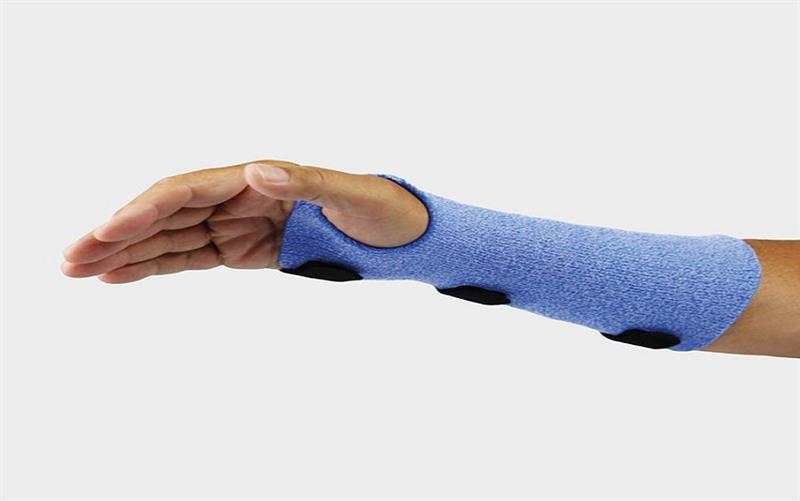
Orficast is a versatile thermoplastic material commonly used in orthopedic and hand therapy for making custom-made orthotic splints. These splints are designed to support and immobilize injured or weak joints, offering patients comfort and improved functionality. Orficast is a valuable tool in the field of orthopedics and hand therapy. By following these essential tips and tricks, you can create effective and comfortable custom splints, contributing to the well-being and recovery of your patients.
To make the most of Orficast, here are some essential tips and tricks for success:
1. Proper Material Selection:
Orficast comes in different thicknesses and colors. Choose the appropriate thickness for the specific patient's needs. Thinner materials are suitable for fingers, while thicker ones provide more robust support for larger joints.Orficast comes in various thicknesses and colors. The choice of thickness depends on the joint or limb you're splinting. Thinner materials, around 1.6mm, are ideal for finger splints as they offer flexibility and dexterity. For larger joints like wrists or elbows, thicker Orficast material, around 2.3mm, provides more substantial support.
2. Precise Sizing:
Ensure accurate measurements of the patient's limb or joint for the best fit and functionality. Be cautious not to make the splint too tight or too loose.Taking accurate measurements of the patient's limb or joint is critical for ensuring the splint fits properly. A well-fitted splint provides the necessary support without being too tight or too loose, which could lead to discomfort or inefficient immobilization.
3. Tools and Materials:
Have all necessary tools and materials ready before starting. These may include Orficast rolls, scissors, a heat gun, padding, Velcro straps, and a model of the patient's limb for shaping. Gather all the necessary materials and tools before starting the splinting process. This includes Orficast rolls, a heat gun, scissors, padding materials (such as foam or soft fabric), Velcro straps, and any additional components that may be required for the specific splint design.
4. Preparation:
Heat the Orficast material using a heat gun, following the manufacturer's recommendations. It's crucial to soften the material adequately, making it pliable for molding. Use a heat gun to soften the Orficast material. Follow the manufacturer's recommendations for heating temperature and duration. Properly softened Orficast becomes pliable and easy to mold.
5. Molding Techniques:
While the Orficast is still warm and pliable, mold it to the shape of the limb or joint. Use your hands and fingers to gently and evenly contour the material. Pay close attention to the anatomical landmarks to ensure a comfortable and supportive fit. Take your time during this step to avoid mistakes.
6. Avoid Overheating:
When shaping the Orficast, use your hands and fingers to mold it to the desired shape while it's still pliable. Take your time to create a comfortable and supportive fit. Be cautious when using the heat gun to soften the Orficast. Overheating can make the material too hot, potentially causing discomfort or even burns to the patient's skin. Maintain a safe distance between the heat gun and the material to prevent overheating.
7. Padding:
Apply padding to the inner surface of the splint to enhance comfort and prevent pressure sores. Foam or soft fabric can work well for this purpose. Apply padding to the inner surface of the splint. Padding enhances comfort, prevents pressure sores, and maintains a gap between the patient's skin and the splint material. Soft foam or fabric can be applied in areas that may come into contact with bony prominences.
8. Velcro Straps:
Attach Velcro straps to secure the splint in place. Ensure they are snug but not too tight to maintain proper circulation. Attach Velcro straps to secure the splint in place. Ensure that the straps are snug but not overly tight. Proper tension allows for good immobilization and circulation. Velcro straps can be adjusted to the patient's comfort level.
9. Education:
Provide clear instructions to the patient on how to wear and care for the splint. Explain the purpose of the splint and its expected benefits. It's essential to educate the patient on how to wear and care for the splint. Explain the purpose of the splint, its expected benefits, and any specific care instructions. Patient compliance is crucial for the success of the treatment.
10. Regular Follow-up:
Schedule follow-up appointments to assess the splint's fit and make necessary adjustments. Over time, a patient's condition may change, requiring modifications to the splint.Schedule follow-up appointments to assess the splint's fit and make necessary adjustments. Patients' conditions may change over time, and adjustments may be needed to maintain the splint's effectiveness.
11. Customization:
Orficast allows for creative customization with various colors and patterns. Personalizing the splint can increase the patient's engagement and satisfaction. Orficast allows for creative customization. You can use different colors and patterns to personalize the splint. Personalization can increase patient engagement and satisfaction, especially for children or individuals who want a more aesthetically pleasing splint.
12. Documentation:
Maintain accurate records of each patient's splint design, measurements, and any modifications made during follow-up appointments. This documentation is essential for tracking progress and for insurance and legal purposes. Maintain accurate records of each patient's splint design, measurements, and any modifications made during follow-up appointments. Detailed documentation is essential for tracking progress, ensuring proper billing and reimbursement, and for legal purposes.
13. Continued Learning:
Stay up to date with the latest techniques and developments in orthotic splinting. Continuing education and training will help you provide the best possible care and stay informed about new materials and methods in the field. Stay updated on the latest techniques and developments in orthotic splinting to provide the best possible care for your patients.